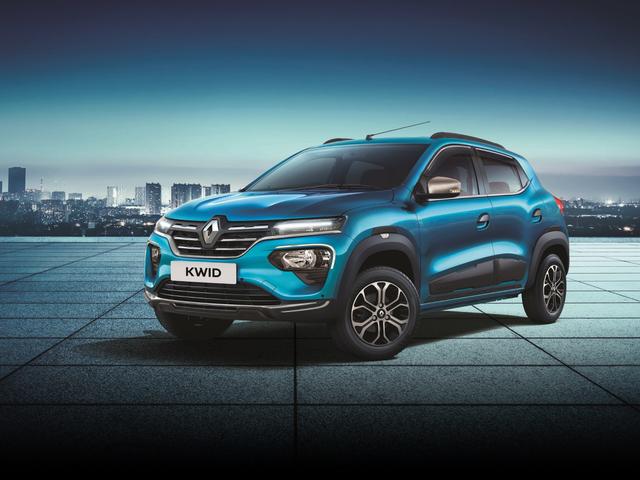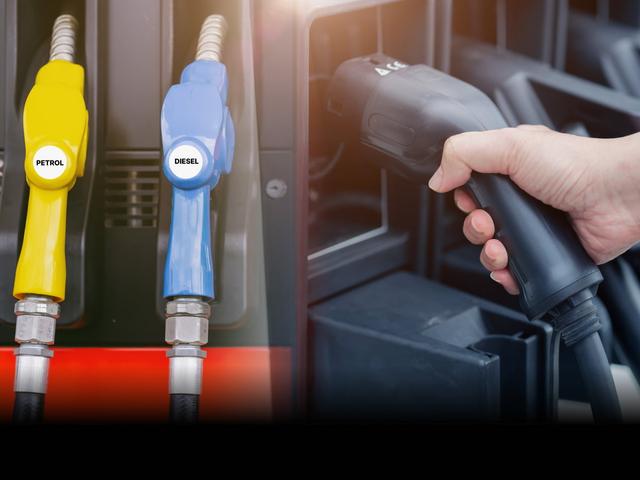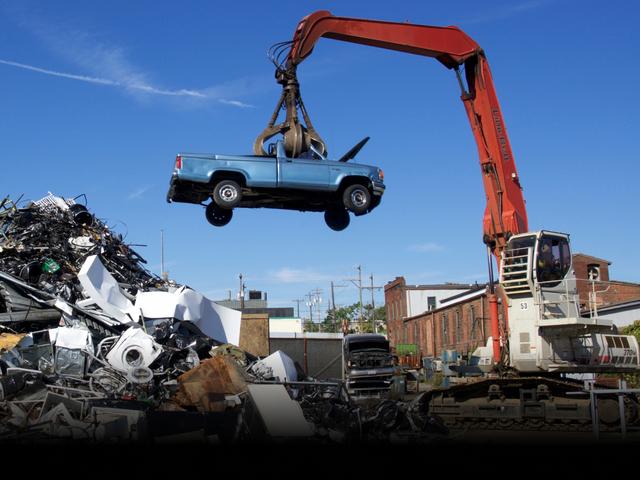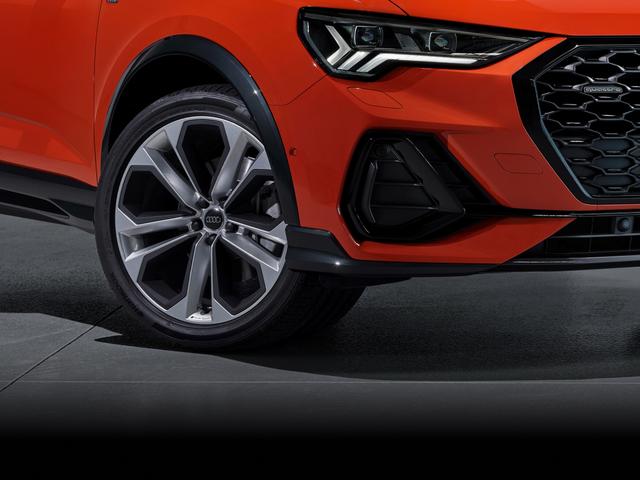Just as humans need to nourish themselves, fueling with food and water to keep going, a car needs a form of fuel to keep running. While the task of refuelling a car is easy, given the numerous fuel stations strewn across the country, it’s the “how to” that might need addressing. No, we’re not referring to the simple task of getting to a fuel station and finding a fuel dispensing pump, but rather the first step to allow for the process to happen. Refuelling your car starts with the simple act of opening the fuel tank cap. Despite its simplicity, many drivers, especially new ones or those driving unfamiliar vehicles, can find it challenging to locate the fuel cap opener. This isn’t to fault the driver but the fact that various car manufacturers adopt different methods of executing this process thus making it difficult initially.
To execute the opening of the fuel-filler cap, some cars use levers, some use buttons, while there are some that unlock with the car’s central locking mechanism, or sometimes in the menus of the touchscreen. Come to think of it, a fuel tank opener should be easy to locate but this often overlooked little mechanism can be perplexing albeit, briefly. The fuel tank opener is usually a small lever or button that is responsible for releasing the fuel-filler cover or cap, allowing the attendant to access the fuel tank. Knowing where it is and how to operate it is essential for a quicker and easier refuelling experience. CARS24 has compiled a rather elaborate set of methods and listed the various options that will explore the importance of knowing the fuel lid opener’s location. If you think we missed out on a specific model with a unique fuel tank cap opener, feel free to discuss it on the CARS24 auto community, CLUTCH, where there are more interesting automotive discussions taking place.
Locating the Fuel Tank Door Opener
Mechanisms aside, where the actuator is located in a car is more relevant as information. Knowing this can help you in various scenarios and can even get you out of a sticky situation with a new or unfamiliar car.
Importance of Knowing the Fuel-filler Lid Opener’s Location
Understanding the location and operation of your car’s fuel lid opener is not just about convenience, it’s also about safety and smoothness of the fuel-filling procedure. There are numerous benefits of having this knowledge –
Convenience
Knowing the exact location of the fuel tank cap opener saves time, especially when you’re at a busy fuel station. It prevents unnecessary fumbling and frustration, allowing for a quick and smooth refuelling process.
Safety
Mishandling the fuel tank lid opener can cause damage to the mechanism or the lid itself. Understanding how to operate it properly ensures that you avoid costly repairs and potential safety hazards. The fuel tank lid has to remain shut at all times while a vehicle is operating. A failed lid or falsely shut fuel tank cap can be a potential fire hazard or create a vacuum in the fuel tank leading to improper functioning of the vehicle.
Efficiency
In an emergency or when refuelling in a rush, knowing the location of the fuel lid opener ensures you can quickly access the fuel tank, saving time and reducing stress. This is especially relevant when in a new or unfamiliar car or even assisting a new driver.
Common Scenarios Where this Knowledge is Needed
You may think that this information may not come in handy, especially if you’ve spent enough time with your own car. However, there are instances when this information can be vital –
Renting or borrowing a car
When driving a car that isn’t your own, locating the fuel lid opener might not be immediately obvious. Different manufacturers and, in some cases, different models of cars from the same manufacturer can have different locations for the fuel-filler cap opener.
New car ownership
If you’ve just bought a new car, familiarising yourself with the location of the fuel lid opener should be one of your first steps. You may need to fuel up immediately or in the very near future and this aspect can easily be overlooked in the excitement of getting and driving a new car. It is thus important to ask a dealership representative to make you aware of the location of the fuel-filler cap opener or opening mechanism.
Driving a different car model
If your household has multiple cars or if you frequently switch between cars, each model may have the fuel lid opener in a different location. The fuel tank cap opener mechanism may be different as well. Familiarising yourself with the various mechanisms will prevent you from a last minute search at the fuel pump.
Conventional location of the fuel lid opener
Description
The conventional location of a fuel lid opener typically involves a lever mechanism that is easily accessible to the driver. This means that this lever is often located near the driver’s seat, within an arm’s reach, allowing the driver to open the fuel door without exiting the vehicle. The lever placement is usually such that it can prevent unintentional operation for safety reasons.
Overview
Placement – Typically found on the floor to the right side of the driver’s seat, near the door, marked by a fuel pump logo. This is commonly the location for the boot release lever as well. It can also be located in the footwell, to the right, adjacent to the driver’s lower right leg. Some cars may even have this lever mechanism placed on the right-most bottom of the dashboard.
Mechanism – This type of opener is usually a simple cable attached to a lever that, when pulled, releases the fuel door lock and opens it via a spring mechanism. Once the attendant at the pump is done filling, they simply push the door back to lock it again. These fuel-filler doors cannot be manually opened from the outside; thus, there is no fear of fuel theft.
Importance
Ease of access – The location of such types of fuel cap opener mechanisms makes it convenient for the driver to access and operate the lever albeit with a little physical strain. They’re also the safest when it comes to protection against accidental opening.
Reliability – Mechanical levers are generally very reliable and less prone to malfunction compared to their electronic counterparts.
Guide and tips
Where to look – Check near the floor on the right side of the driver’s seat and look for a lever that has a fuel pump icon on it. It may also be located near the seat adjustments or on the to the side of the seat itself. Alternative locations are on the right side of the footwell or under the dashboard.
What to press – These levers mostly operate a pull-to-release type mechanism; thus, pulling this lever should release/unlock the fuel door.
Examples of cars in India with conventional fuel lid openers
- Most entry-mid-level Maruti Suzuki cars like the Alto K10, S-Presso, and Swift
- Honda cars like the Jazz and City have it placed near the right side of the footwell
- Toyota Glanza has the fuel door release lever placed on the lower right-side of the dashboard.
Powered Fuel Lid Opener

Description
Powered fuel lid openers are a step up from the conventional mechanical lever setup. These release devices use buttons and electronics to operate a motorised mechanism that unlocks the fuel door. Since these are a higher-spec mechanism, it’s no surprise that they’re found on more expensive models.
Overview
Placement – Often controlled by a button located on the dashboard. Pressing this button sends an electrical signal to the fuel door lock which releases the locking mechanism. Rarely would this button be placed elsewhere, with the exception of some manufacturers that use the same electronic release but mask it with a traditional-looking lever placed in the right, bottom corner of the dashboard or footwell.
Mechanism – Utilises an electronic system to release the fuel door. These mechanisms have proven to be fairly reliable over the years with the off chance of failure due to a fuse blowout rather than the physical mechanism failing. Once shut, the mechanism automatically locks the fuel-filler door, preventing fuel theft.
Importance
Modern convenience – Powered openers add a level of sophistication and ease, especially in vehicles with advanced features. So this type of fuel door release may be found in cars that have more electronic functions like powered tailgate release buttons etc.
Integration with security systems – Often tied to the car’s central locking system, ensuring the fuel door is securely closed when the car is locked. The car may be required to be unlocked first before the fuel door button can be operated.
Guide and Tips
Where to look – Typically, the fuel door release button is located on the right side of the dashboard, near other control buttons such as the headlamp adjuster or boot release button.
What to press – Look for a button with a fuel pump icon, lightly pressing it will unlock the fuel-filler door. In some cars, the button may only release the lock and the fuel door may have to be gently pressed externally to open the door and access the fuel-filler cap.
Examples of Cars in India with Powered Fuel Lid Openers
- All Volvo cars XC40, XC60, XC90 etc.
- Mahindra XUV 500.
- MG Gloster.
Integrated electric fuel door release

Description
The electric fuel door release button is modern and convenient but also redundant as it simply adds another step in the process. Many manufacturers have thus resorted to integrating the electric fuel door release with the locking/unlocking mechanism in a car. So, instead of operating a separate button to release the fuel door lock, one can simply unlock the car, and the fuel door can be opened externally. These fuel doors almost always use a push-push locking mechanism, which means that the fuel door can be lightly pushed to open by the pump attendant and pushed to shut and lock once refuelling is done.
Overview
Placement – Typically located on the driver’s side door panel as the lock/unlock button for the main doors. Some cars may place this button on the left side of the dashboard, towards the centre while some may have just a single unlocking button.
Mechanism – Operates via an electric signal that triggers the release of the fuel door. The mechanism is similar to the powered fuel lid opener system that sends an electric signal to actuate the fuel door locking/unlocking mechanism.
Importance
User-friendly – Eliminates an extra step and makes for hassle-free operation with just the push of a button to unlock while locking is automatic, making the process very convenient.
Enhanced security – This type of mechanism is integrated with the car’s electrical system, more specifically, the car’s central locking system. This ensures that the fuel door can only be opened when the car is unlocked and it remains locked whenever the car doors are locked.
Guide and Tips
Where to look – Check the driver’s side door panel for a button or a pair of buttons with a lock and unlock symbol. Alternatively, in some cars, you can find a similar button at the centre of the dashboard.
What to press – Identify the button with a lock/unlock symbol and press it to electronically release the fuel door. The fuel pump attendant will have to physically press the fuel door externally to open the lid and access the fuel tank cap. Be aware that using this button also unlocks the doors at the same time.

Examples of cars in India with integrated electric fuel door release
- Most Hyundai cars are like the i20, Verna, Tucson, etc.
- Most Kia cars are like the Sonet, Seltos, etc.
- All Mercedes-Benz cars, such as the GLC, GLE, C-Class, E-Class, A45 AMG, etc.
Manual override in case of malfunction

Description
As part of safety requirements, most vehicles are equipped with a manual override mechanism for the fuel-filler door. In case the primary fuel lid opener fails, a backup system allows the driver to open the fuel door manually. This fail-safe mechanism is always present on all cars equipped with an electronic fuel door release. These are usually simple mechanisms and only deactivate the lock of the fuel door.
Overview
Placement – Usually located inside the boot space or near the fuel door itself. Between the fuel door and fuel-filler cap, there is a recess that may conceal this emergency-use mechanism. Ones located in the boot will require the removal of an internal side panel to access the manual override cable.
Mechanism – Involves a manual lever or pull cable that can be accessed and operated to release the fuel door. The pull cable is usually marked with a red or yellow covering or tab so that it can be easily spotted.
Importance
Emergency use – Essential for situations when the electronic or powered mechanism fails, ensuring that you can still access the fuel tank. In some cases, It may be prudent to double check on the electronic fuel door release fuse. Replacing a blown fuse will reactivate the electronic fuel door to access the fuel-filler cap.
Reliability – Modern electric fuel door release mechanisms are mostly reliable but a manual override provides a fail-safe option, especially in older vehicles. This is even more relevant in case of vehicles with known electrical issues or ones that are prone to electronic malfunctions.
Guide and Tips
Where to look – Refer to the vehicle’s manual to locate the exact position of the manual override mechanism. Common locations include the trunk or the interior panel near the fuel door and is usually in the form of a pull-cable.
What to press or pull – Typically, there is a small lever or cable that can be pulled to manually open the fuel door. In some cars, you might need to remove a panel or cover to access this mechanism.
Conclusion
Knowing how to locate and operate your car’s fuel cap opener is a fundamental skill every driver should possess. Whether your vehicle uses a conventional lever, a powered opener or an integrated electric release button, understanding these mechanisms ensures a hassle-free refuelling process. It’s also a vital safety aspect to be aware of the manual override that may come in handy in case of an electronic malfunction or mechanical failure of the fuel cap door. Familiarising yourself with these features, especially if you drive multiple cars or a new model, can save you time and prevent unnecessary frustration at the fuel station. Always consult your vehicle’s manual for specific instructions related to your specific car model. Remember to always check or confirm the positive closure of the fuel tank cap and fuel-filler door after refuelling.
FAQs
Where is the fuel tank opener located?
The fuel tank opener is typically located near the driver’s seat, either as a lever on the floor at the right side corner or as a button on the dashboard or door panel.
What if I can’t find a fuel cap opener in the car?
Some cars use an electronic fuel-filler door lock that unlocks with the main central locking mechanism. In such cases, simply use the unlock button on the door panel. The fuel-filler door can then be externally pushed to open to access the fuel tank cap.
How can you find out which side of the car your fuel door is located?
You can determine the side of your fuel door by checking the fuel gauge on your dashboard or instrument cluster. There’s usually a small arrow next to the fuel pump icon pointing to the side of the vehicle where the fuel-filler cap is located. Of course, you can also physically check the exterior of the car before entering, or refer to the car’s manual.
Where is the fuel cap located?
The fuel cap is located behind the fuel door and can be found on either the left or right side of the vehicle, depending on the model. It is usually located on the rear quarter panel of the car.
How can I tell which side the gas tank is on without leaving my car?
Look at the fuel gauge on your dashboard. A small arrow next to the fuel pump icon indicates the side of the car on which the gas tank is, allowing you to position your car correctly at the fuel pump.








.jpg&w=828&q=75)



.jpg&w=828&q=75)



.jpg&w=828&q=75)




-(1).jpg&w=828&q=75)










.jpg&w=640&q=75)




